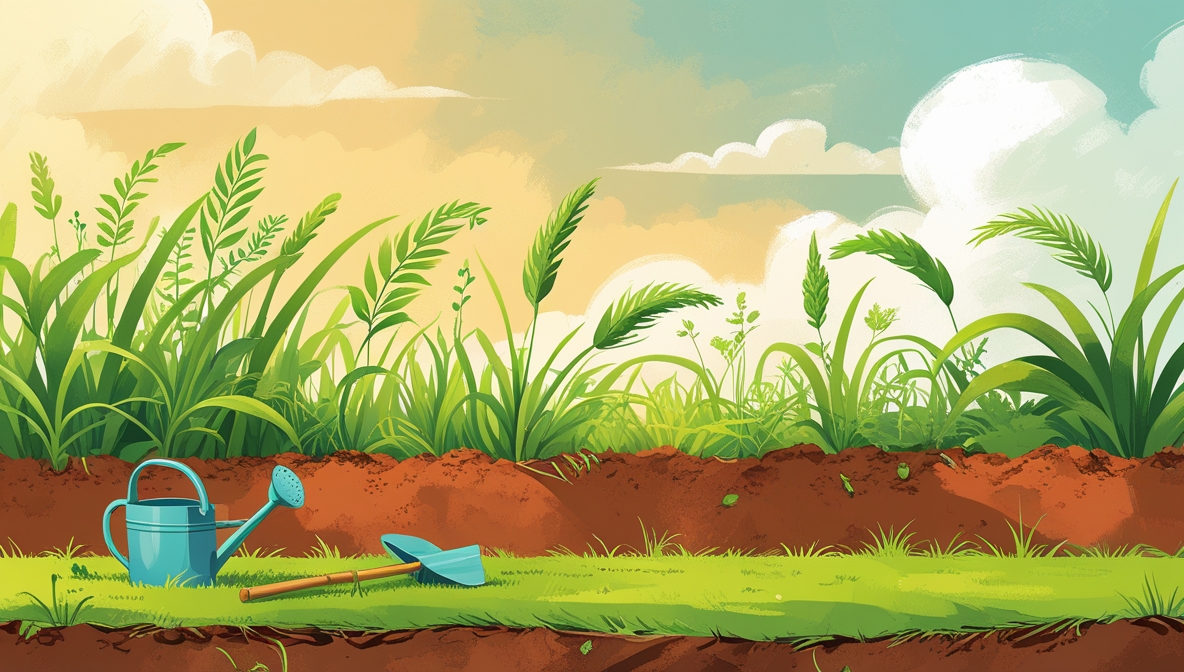Clay soil can be a real pain for aspiring lawn owners. It’s notoriously difficult to work with, prone to compaction, and often drains poorly. But fear not! With the right knowledge and techniques, you can successfully grow a lush, green lawn even in this challenging soil type. This guide will walk you through the steps to transform your clay into a thriving grass paradise.
Contents
Understanding Clay Soil
Clay soil is known for its tiny particles that pack tightly together. This creates a dense, heavy soil that holds water like a sponge. While this can be good for some plants, it’s not ideal for grass roots, which need good drainage and aeration to thrive. The tightly packed structure also makes it difficult for air and water to penetrate, affecting the growth of healthy roots. Understanding these characteristics is the first step to successfully growing grass.
Clay soils are often sticky when wet and hard when dry. This makes them difficult to till and prone to compaction from foot traffic or machinery. Knowing these drawbacks is crucial for developing a plan to cultivate healthy grass.
Preparing Your Clay Soil
The key to growing grass in clay soil is improving its structure. You need to break up the dense soil and add organic matter to loosen it up and improve drainage. This often involves a significant amount of tilling, so be prepared for some work. Adding compost, peat moss, or well-rotted manure can greatly improve the soil’s texture.
A crucial step is to amend the soil with organic matter. This can be anything from compost and manure to leaf mold and even shredded bark. The organic matter will help improve drainage, aeration, and water retention, making it easier for grass roots to grow and flourish. Aim for a significant addition of organic matter—it’s often the most impactful way to transform your clay soil.
Choosing the Right Grass Seed
Not all grass seeds are created equal when dealing with clay soil. Look for varieties specifically recommended for clay soil. These often have deeper root systems and better tolerance for the dense soil. Consider cool-season grasses like fescue or bluegrass, which tend to perform well in clay.
Choosing the right type of grass seed is essential for success. Avoid varieties prone to shallow root systems, as these will struggle in the compacted clay. Thorough research into seed types suitable for clay soil will increase the chances of a successful lawn. Seed packets should often specify soil conditions, making your choice easier.
Maintaining Your Clay Lawn
Maintaining a clay lawn requires consistent attention. Regular watering is crucial, but avoid overwatering, as this can lead to waterlogging. Instead, water deeply and less frequently. Aeration is also important to improve drainage and root development. Consider using a garden fork or a specialized aeration tool to create holes in the soil.
Proper fertilization is key. Use a slow-release fertilizer formulated for the type of grass you’ve chosen. Clay soil can sometimes hold nutrients, so you may need to fertilize less frequently than in other soil types. Monitoring the health of your lawn and making adjustments to your watering and feeding schedule is essential for long-term success.
Growing grass in clay soil takes effort and patience, but it’s definitely achievable. By understanding your soil, preparing it properly, selecting the right grass, and maintaining it consistently, you can enjoy a beautiful, healthy lawn even in challenging conditions. Remember that consistent care and attention to detail are key to success in this type of soil.






